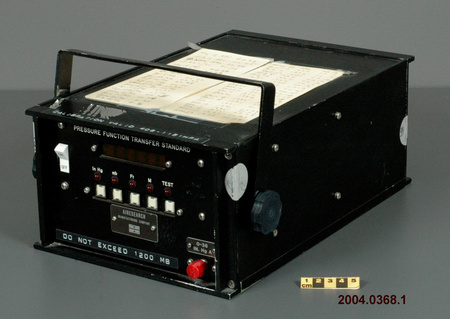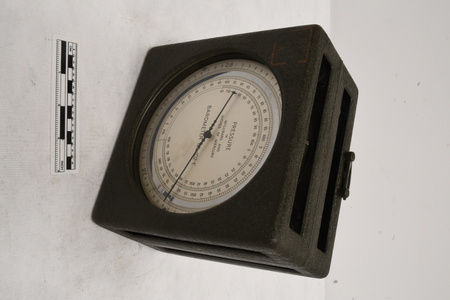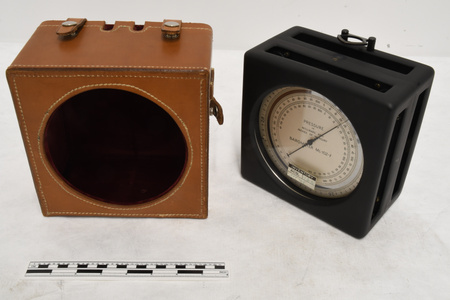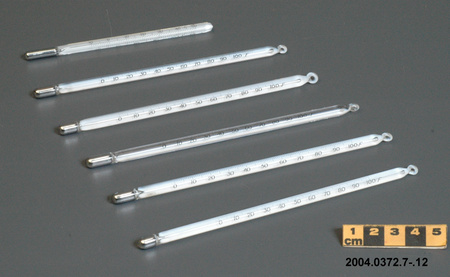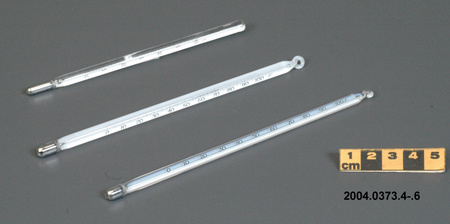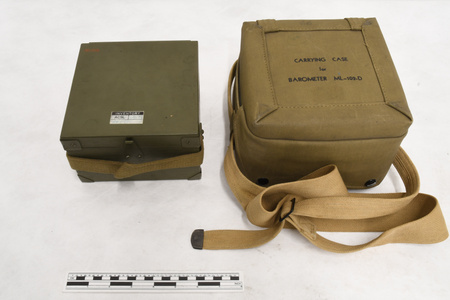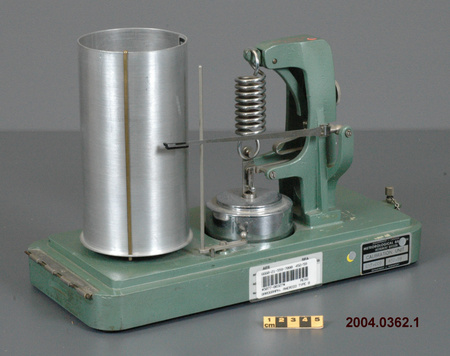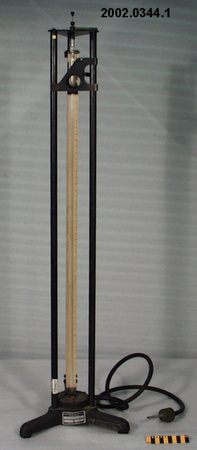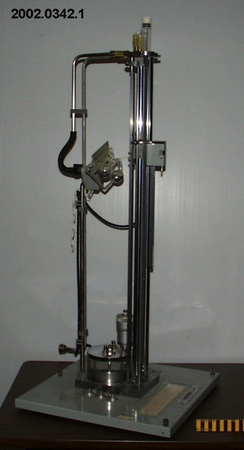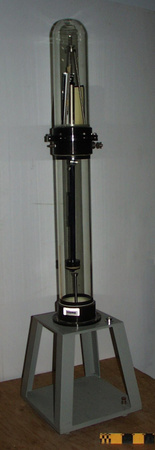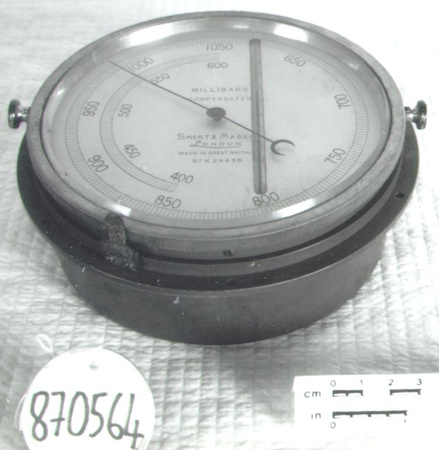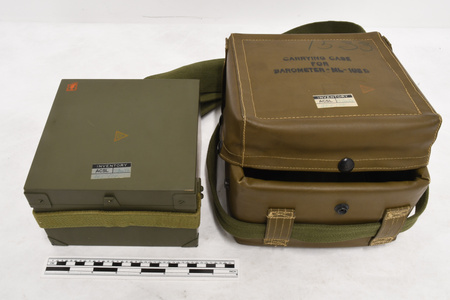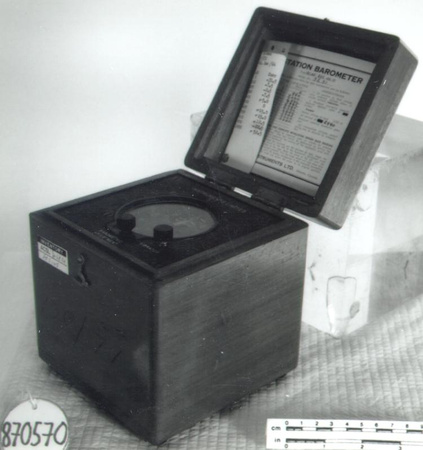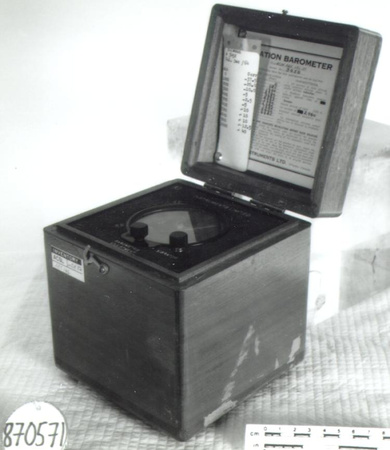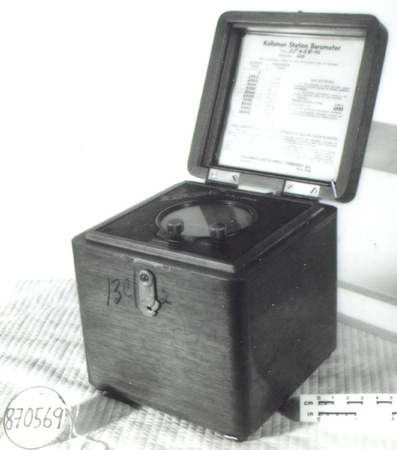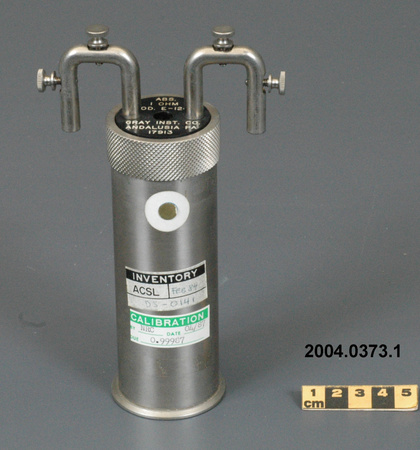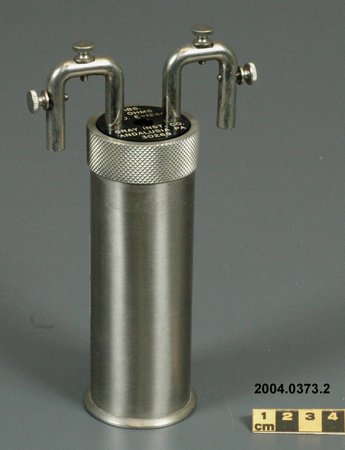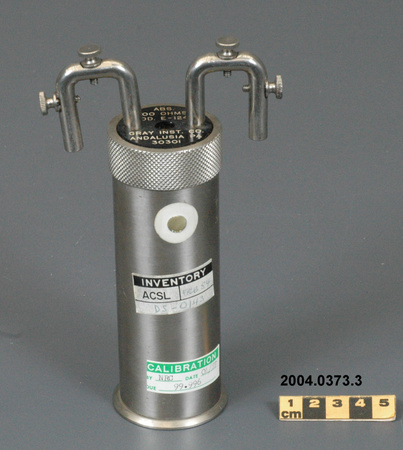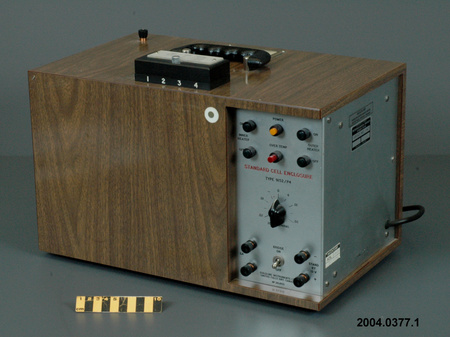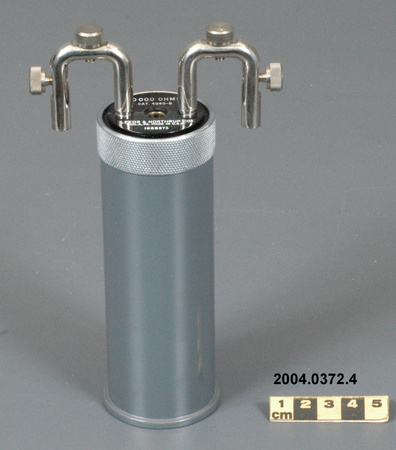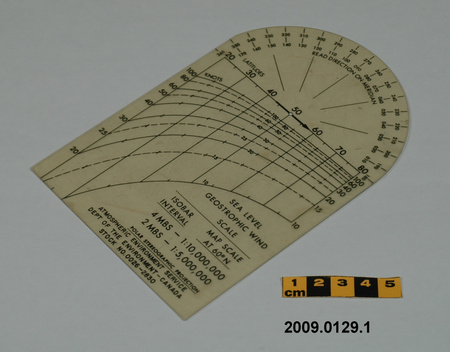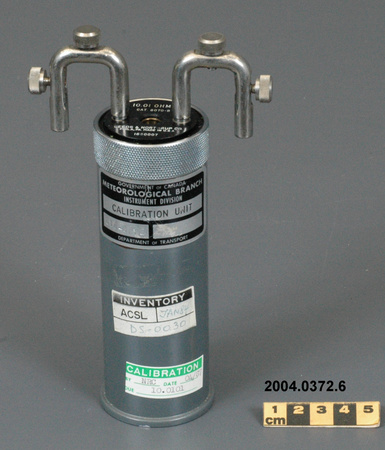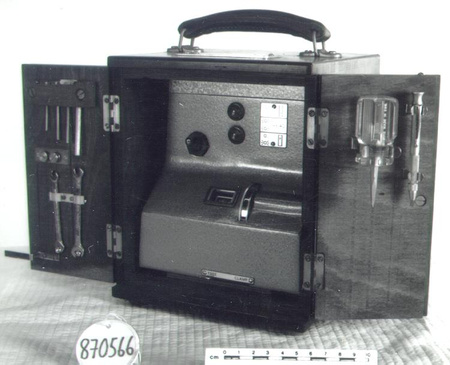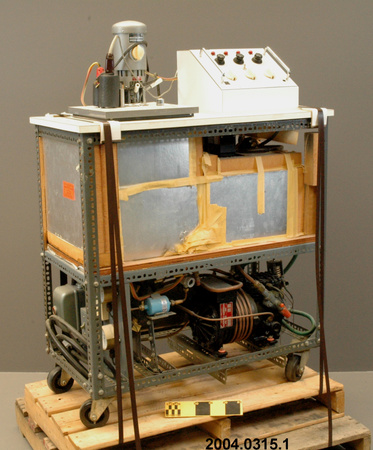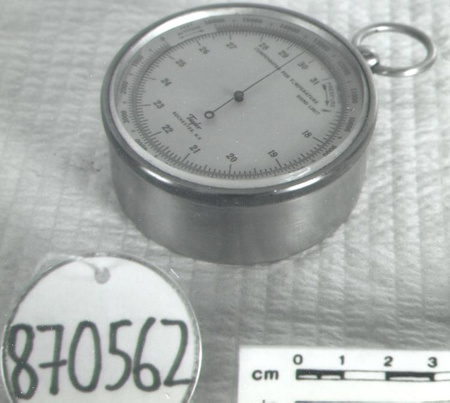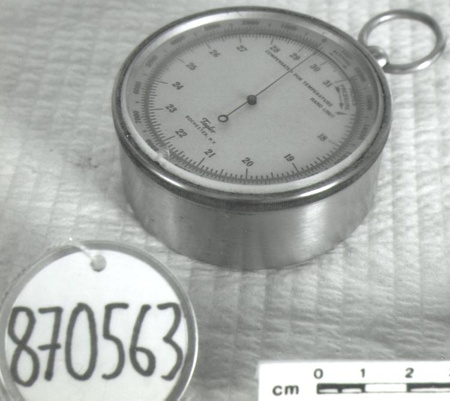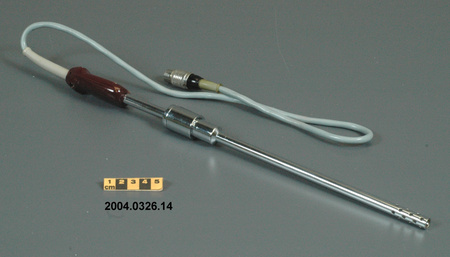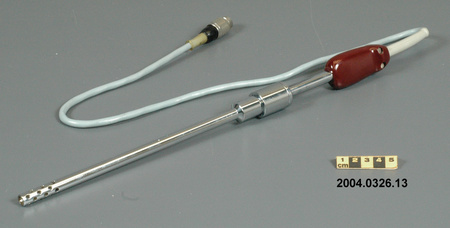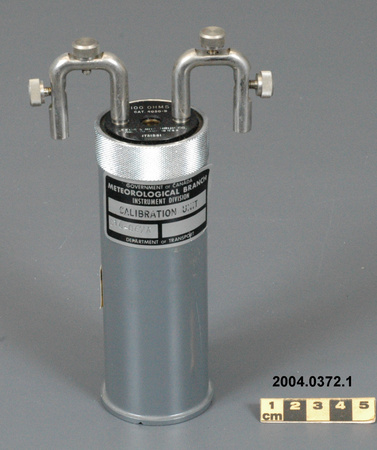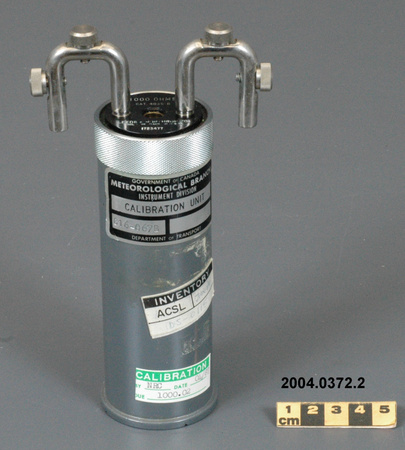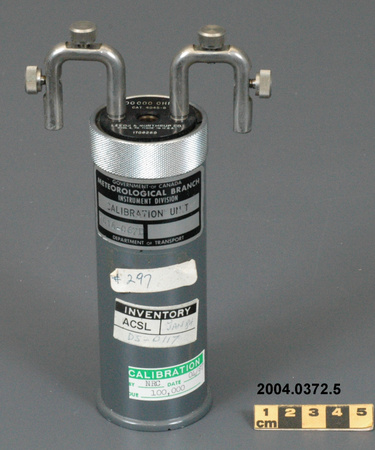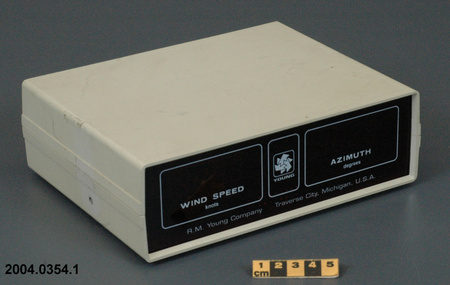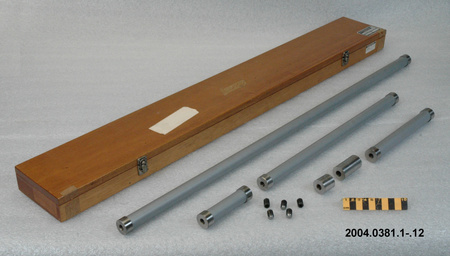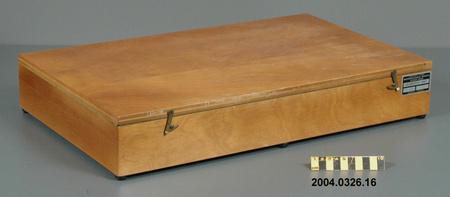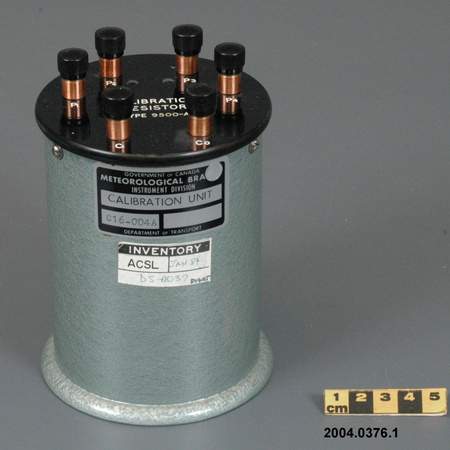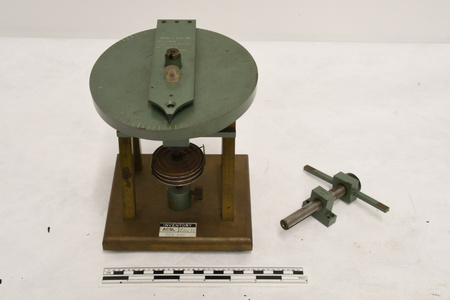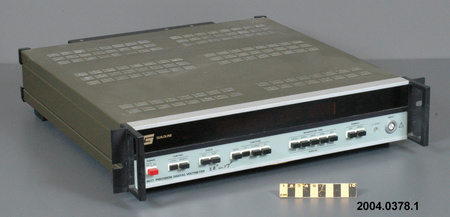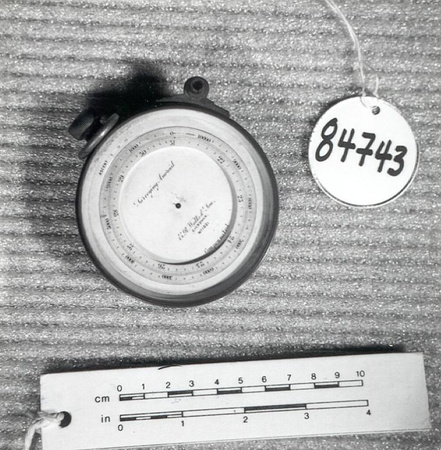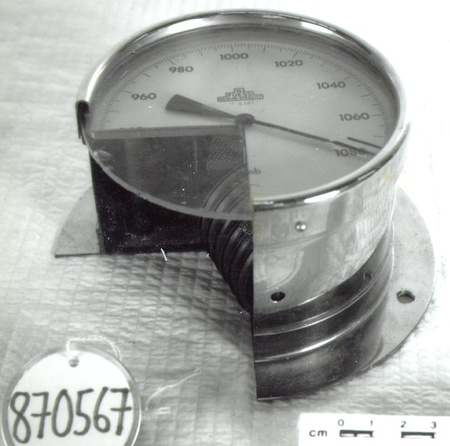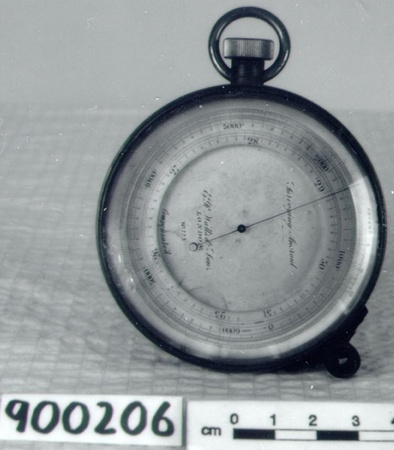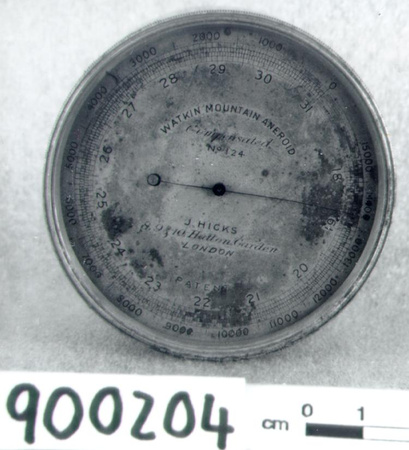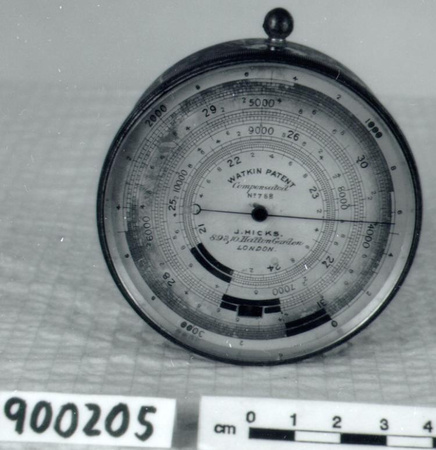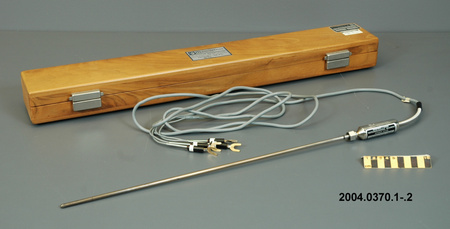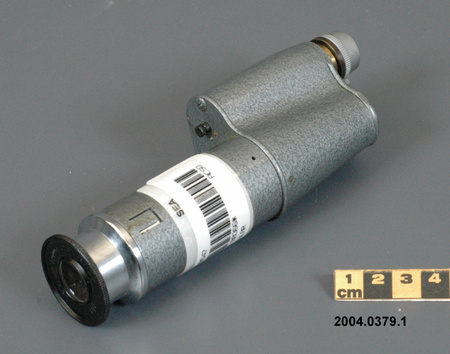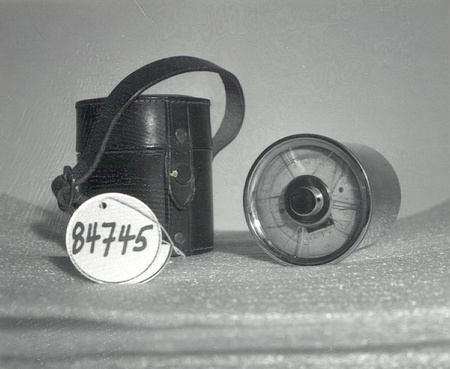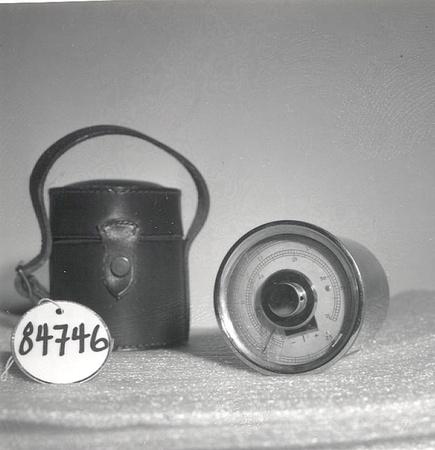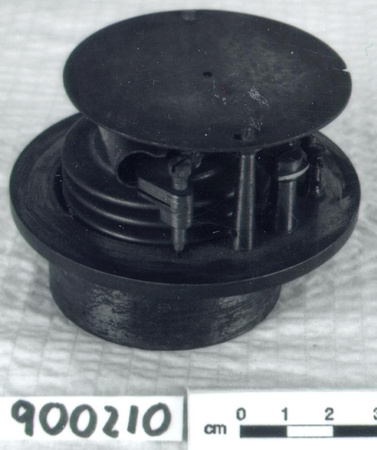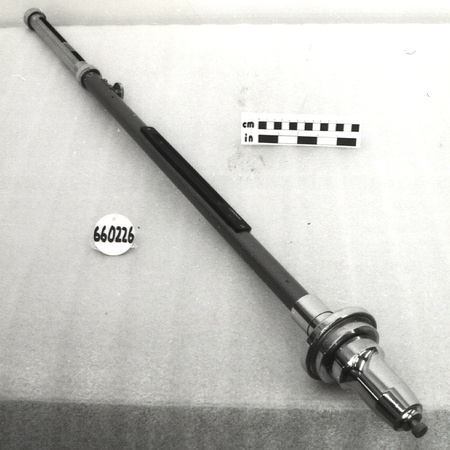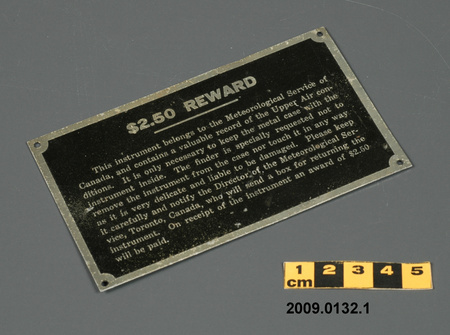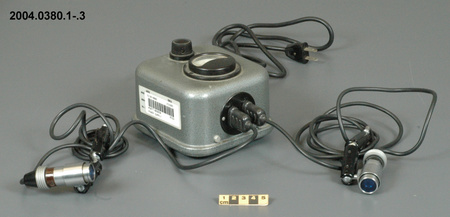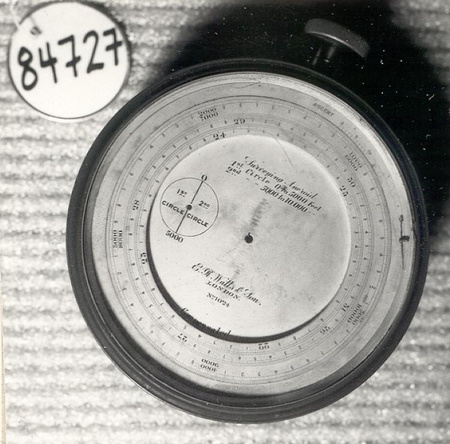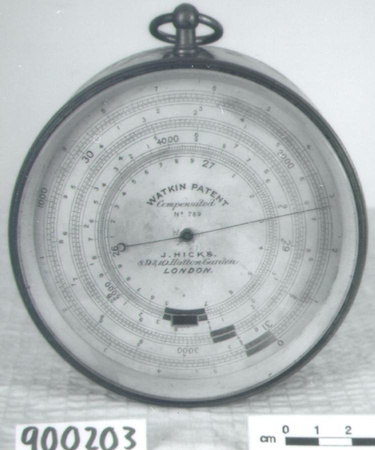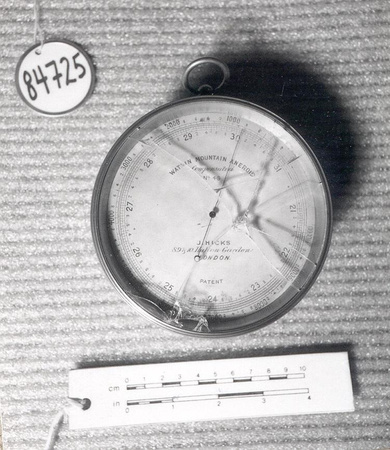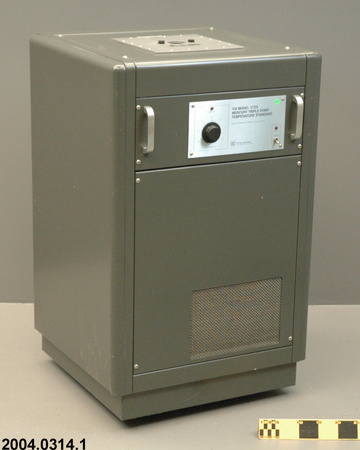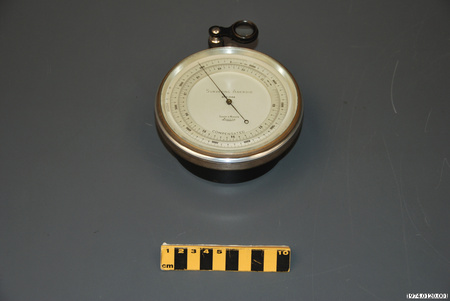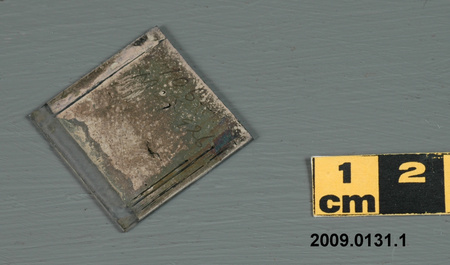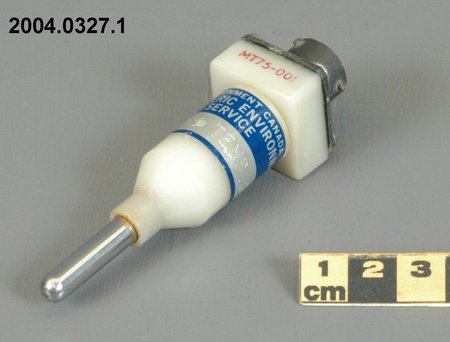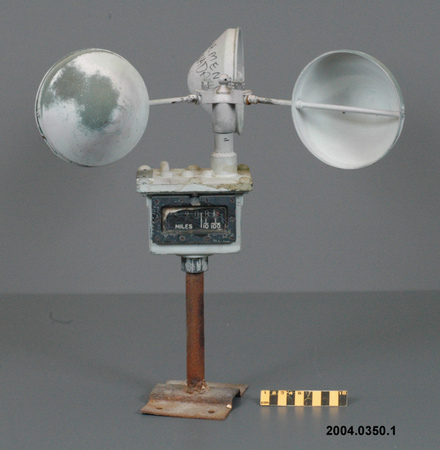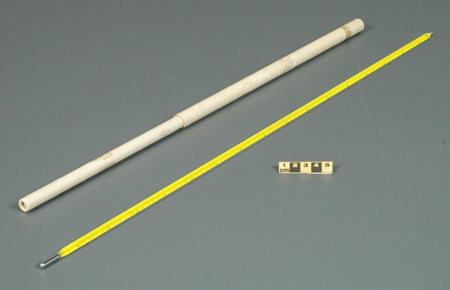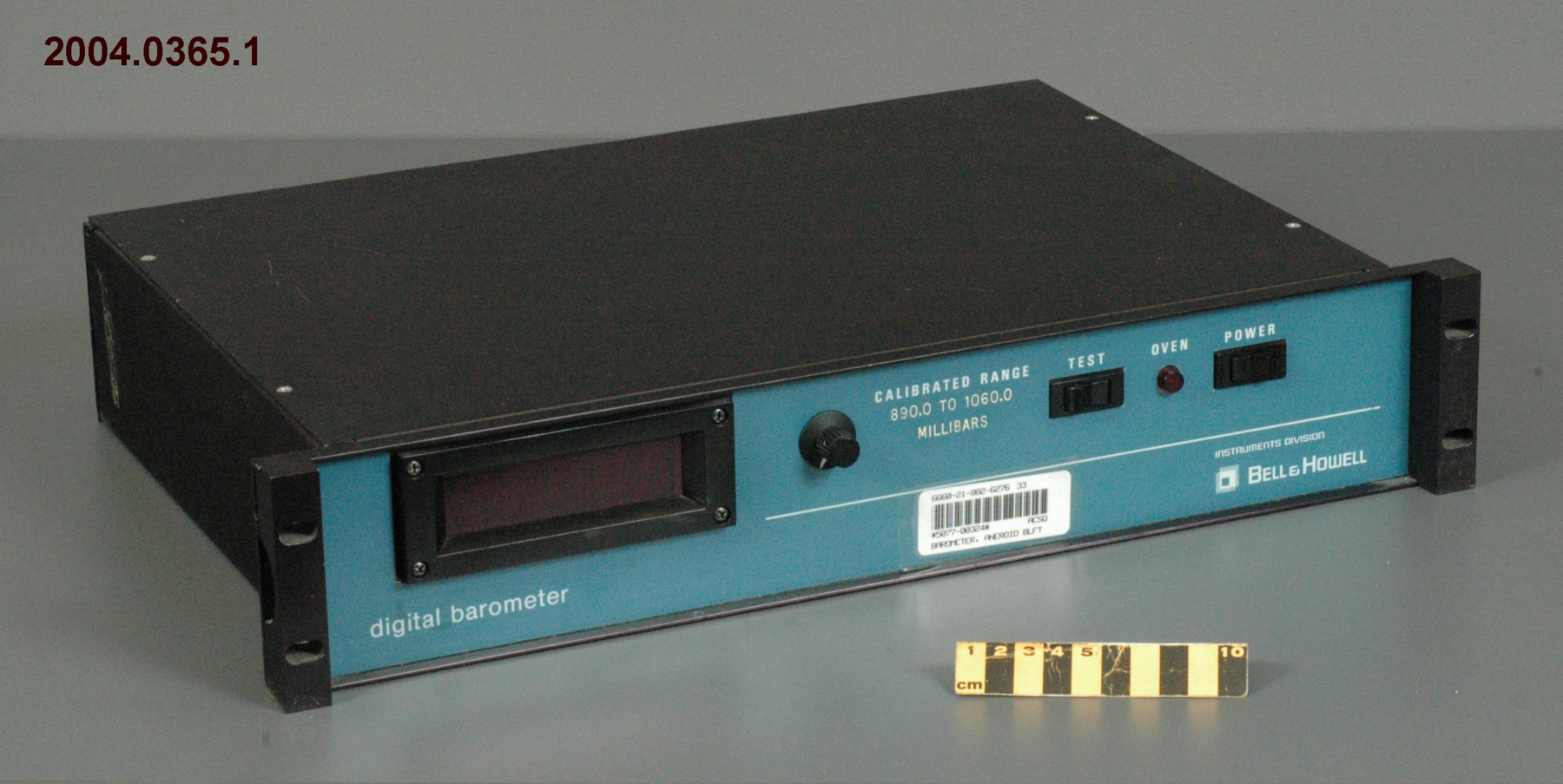Barometer
Use this image
Can I reuse this image without permission? Yes
Object images on the Ingenium Collection’s portal have the following Creative Commons license:
Copyright Ingenium / CC BY-NC-ND (Attribution-NonCommercial 4.0 International (CC BY-NC 4.0)
ATTRIBUTE THIS IMAGE
Ingenium,
2004.0365.001
Permalink:
Ingenium is releasing this image under the Creative Commons licensing framework, and encourages downloading and reuse for non-commercial purposes. Please acknowledge Ingenium and cite the artifact number.
DOWNLOAD IMAGEPURCHASE THIS IMAGE
This image is free for non-commercial use.
For commercial use, please consult our Reproduction Fees and contact us to purchase the image.
- OBJECT TYPE
- aneroid/digital/pressure tranducer
- DATE
- Unknown
- ARTIFACT NUMBER
- 2004.0365.001
- MANUFACTURER
- Bell & Howell
- MODEL
- 4-461-0004
- LOCATION
- Pasadena, California, United States of America
More Information
General Information
- Serial #
- 2096
- Part Number
- 1
- Total Parts
- 1
- AKA
- N/A
- Patents
- N/A
- General Description
- metal casing and parts/ synthetic front panel, controls, indicator window and frame, power cord
Dimensions
Note: These reflect the general size for storage and are not necessarily representative of the object's true dimensions.
- Length
- 48.3 cm
- Width
- 35.0 cm
- Height
- 9.0 cm
- Thickness
- N/A
- Weight
- N/A
- Diameter
- N/A
- Volume
- N/A
Lexicon
- Group
- Meteorology
- Category
- Miscellaneous
- Sub-Category
- N/A
Manufacturer
- AKA
- Bell Howell
- Country
- United States of America
- State/Province
- California
- City
- Pasadena
Context
- Country
- Canada
- State/Province
- Ontario
- Period
- early 1950's +
- Canada
-
An instrument used in the Calibration Unit of the Meteorological Service of Canada. Part of a large collection of meteorological instruments acquired from the Meteorological Service of Canada (previously Atmospheric Environment Service) by the CSTM since 1967. MSC is the government agency responsible for collecting and disseminating meteorological data and forecasts in Canada. It was founded in 1871 in Toronto where it is still headquartered. The MSC was originally on the University of Toronto downtown campus but moved to Downsview in 1971 on land owned by UofT. The headquarters houses laboratories, research facilities and calibration and instrument maintenance facilities (now largely contracted out). - Function
-
An instrument that measures atmospheric pressure and indicates the results in a digital format, used in the calibration of pressure measuring instruments. - Technical
-
This barometer was used in the MSC calibration laboratory and had a calibrated range of 13 - 15.5 A. It contains an oven used to maintain the aneroid at a fixed temperature. The barometer was connected via a tube on the back to a sealed plenum on which other barometers being calibrated were attached. By varying the volume the pressure could be varied and the barometers calibrated. This unit was not the standard but would have been used as a visual readout to monitor the pressure within the plenum. The standard was and is the dead weight tester, the Ruska 2465 gas piston gauge (Ref. 2). The rack mounted version of Bell and Howell's 4-461 digital barometer, which uses a pressure-to-frequency transducer and digital electronics to produce a digital display that indicates directly the atmospheric pressure in millibars. The barometer consists of a digital pressure transducer and a front panel LED display. The pressure measurement is converted by the transducer to a variable frequency signal. This signal, the frequency of which varies with the pressure, is fed into a counter where it is converted into a digital data signal. The latter is sent to the front panel LED assembly, which produces a five digit display and to rear panel connector to be sent to a computer of a remote readout unit (Ref. 1). The pressure sensing element operates as follows: the pressure input to the barometer is applied to a bellows attached to a diaphragm. As the input varies, the diaphragm moves between the fixed plates of a capacitor, causing an increase in capacitance between one plate and the diaphragm and a corresponding decrease capacitance between the other plate and the diaphragm. This chance in capacitance causes a frequency deviation in each of two 50 MHz oscillators, causing one frequency to decrease and the other to increase by an equal amount. The two frequencies are fed into a mixer which produces a signal the frequency of which varies with the input pressure. A precisely controlled heater maintains a constant temperature within the sensor enclosure. The signal is fed to a digital counter that samples the output frequency of the sensor. The time period of the sample count is variable to provide readout in the desired units (Ref. 1). - Area Notes
-
Unknown
Details
- Markings
- white lettering on casing front reads 'digital barometer', ' INSTRUMENTS DIVISION/ [logo] BELL & HOWELL' and 'CALIBRATED RANGE/ 890.0 TO 1060.0/ MILLIBARS'/ grey label on back reads '[logo] BELL & HOWELL/ Pasadena, Calif./ TYPE 4-461-0004 SERIAL 2096/ ASSEMBLY 368078-F'/ white label on front reads '6660-21-882-6276 33/ *5077-00324* ACSQ/ BAROMETER, ANEROID BLFT'
- Missing
- appears complete
- Finish
- black painted casing/ medium blue synthetic front panel with black synthetic controls and indicator window and frame/ grey power cord
- Decoration
- N/A
CITE THIS OBJECT
If you choose to share our information about this collection object, please cite:
Bell & Howell, Barometer, Unknown Date, Artifact no. 2004.0365, Ingenium – Canada’s Museums of Science and Innovation, http://collection.ingenium.ca/en/id/2004.0365.001/
FEEDBACK
Submit a question or comment about this artifact.
More Like This


